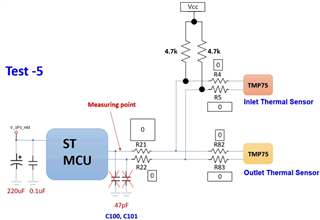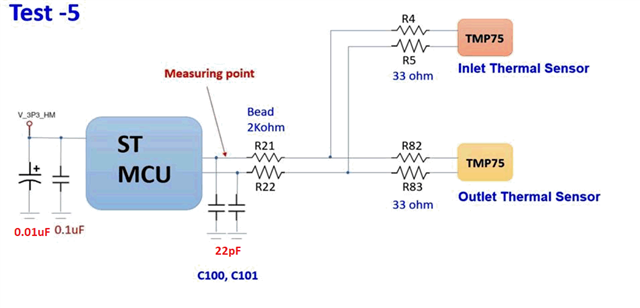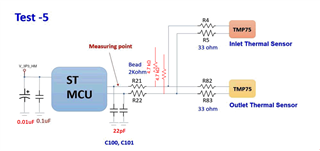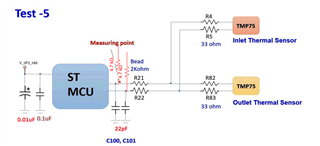Hi, Support Team
We use TI TMP75AIDGKR for temperature sensor source, Need your help to clarify some question:
Heater Module is use for the system that will be in the low ambient temperature,and when the system shut down, heater will start to heat the system.There are two sensors in module. One for detect ambient temp(Inlet sensor), another for detect the heat air flow temp(outlet sensor).There is the question, when heater on(below ambient temp -3C), I2C signal is going to be interfered and turn fail.
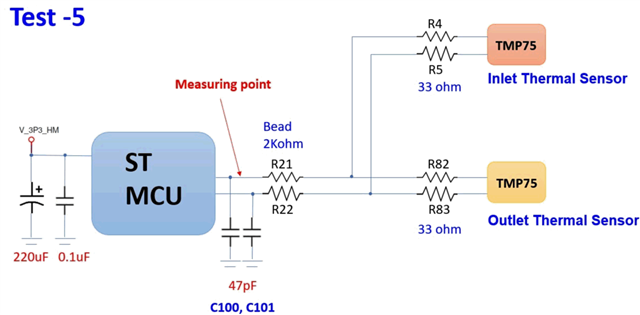
Q1. EE team find out the I2C signals have some noise(from another known power issue), and we added some capacitors to offset them, the waveform look better, but when we put UUT back to chamber,
there still show fail. Attachment is for the I2C signals waveform and the log of I2C signal in room temperature and -3 degree C.
Is there recommendation solution for us?
Q2. Is there any know issues with reading temperatures below zero (55 degree C to -20 degree C for our operating temp.)?
Q3. For using I2C analyzer in chamber(-3 degree C), is there any recommendation for setting up the analyzer?
Q4. If we are going to measuring the I2C signals with an Oscilloscope when UUT is in chamber, is there any recommendation for setting up?
I2C signal before/after heat on:(See attached file: IMG_4415.JPG)(See attached file: IMG_4416.JPG) and added the test-5 solution(before/after heat on): (See attached file: IMG_4417.JPG)(See attached file: IMG_4418.JPG)
(See attached file: FAIL_-3C.csv)(See attached file: PASS_RoomTemp.csv)
IMG_4415:
IMG_4416:
IMG_4417:
IMG_4418:
If any suggestion, Please advise me.
Thanks,
Best regards,
Lawrence


